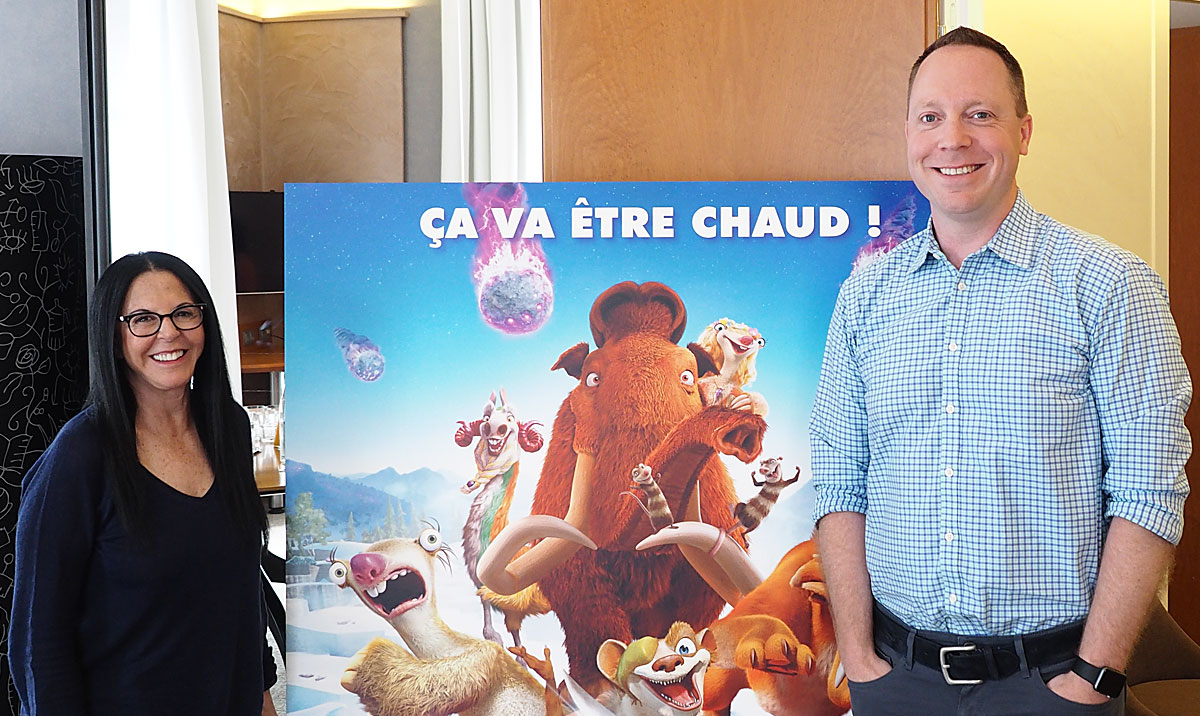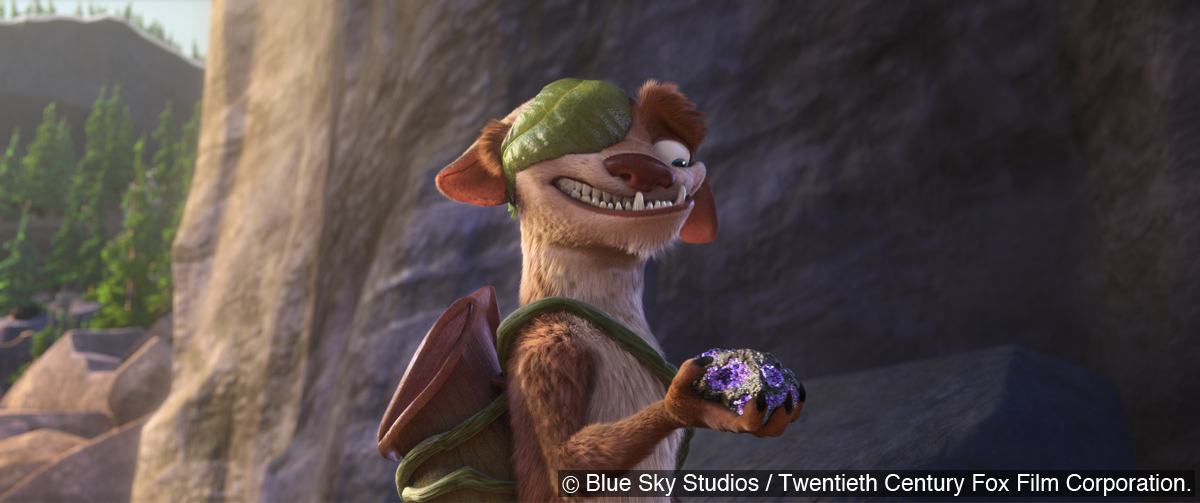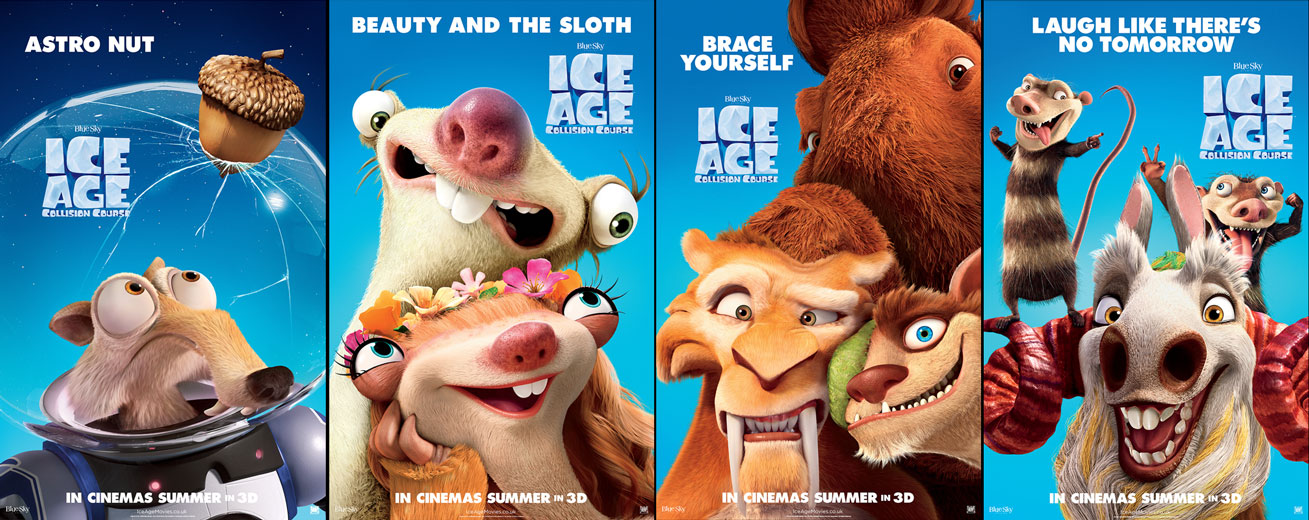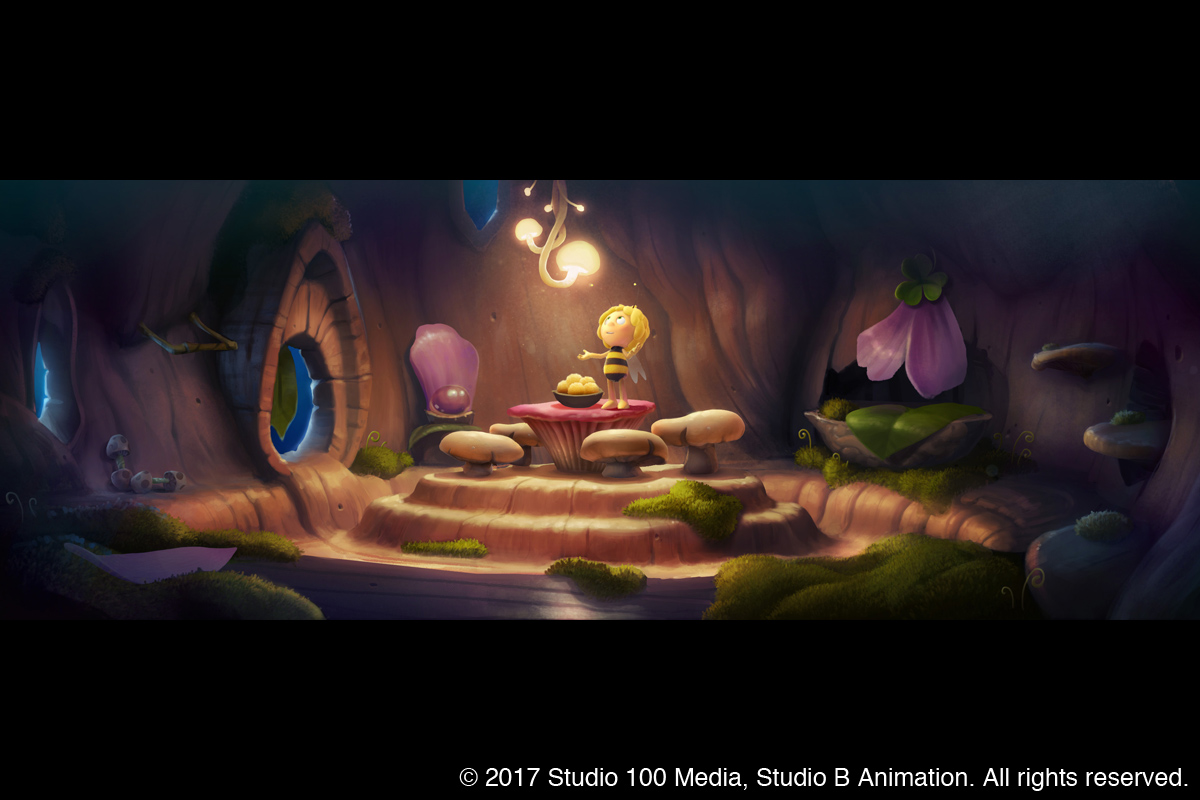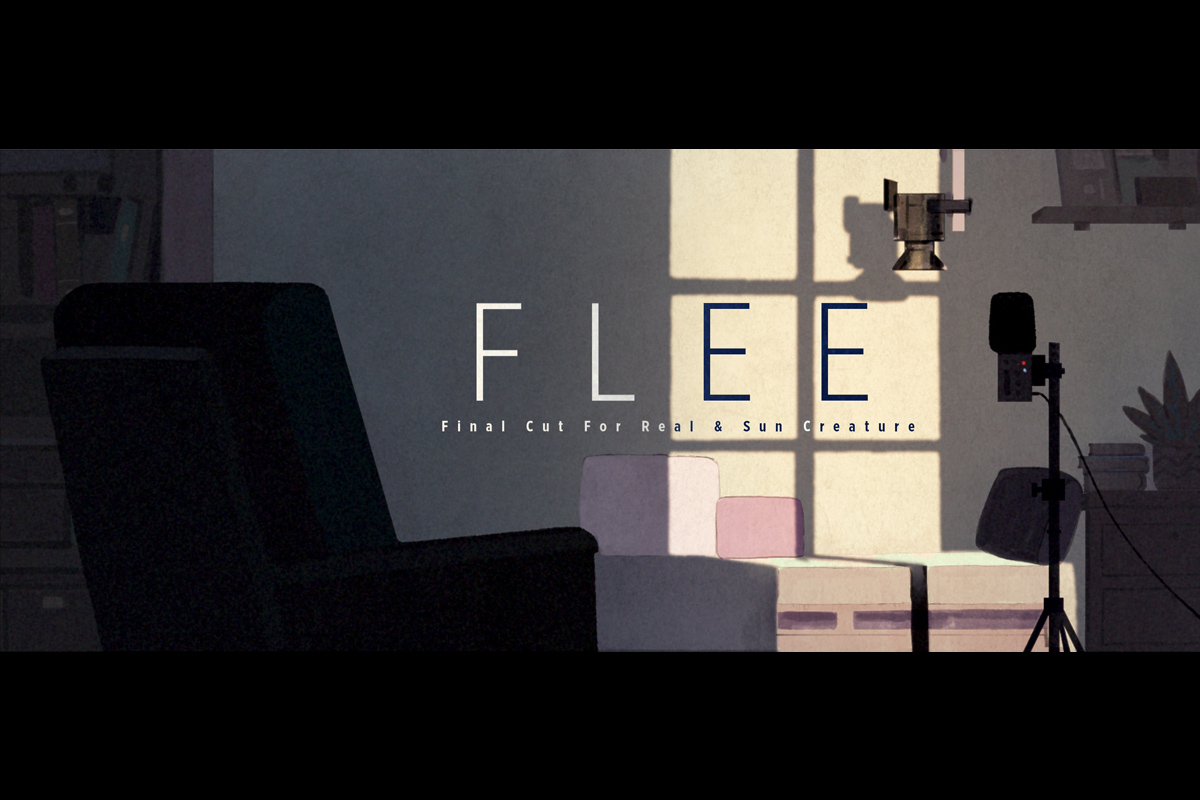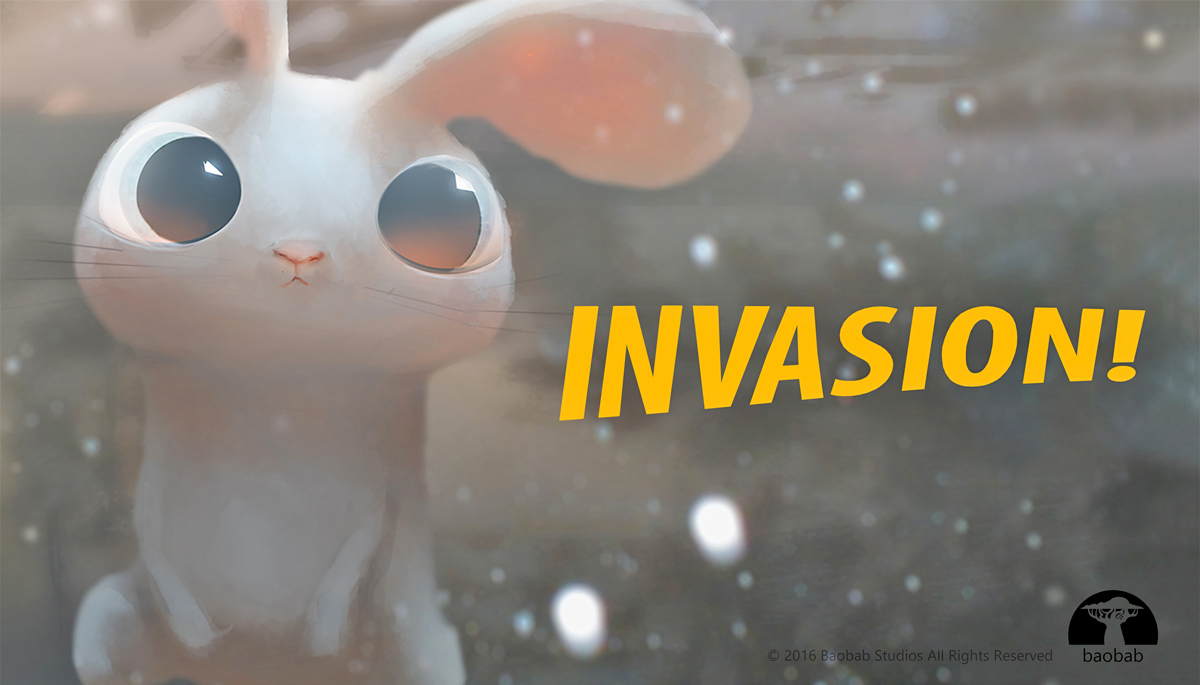Synopsis
Scrat’s epic pursuit of the elusive acorn catapults him into the universe where he accidentally sets off a series of cosmic events that transform and threaten the Ice Age World. To save themselves, Sid, Manny, Diego, and the rest of the herd must leave their home and embark on a quest full of comedy and adventure, travelling to exotic new lands and encountering a host of colourful new characters.
Since the first Ice Age hit the scenes in 2002, four films of the Ice Age series have been in theatres globally. Being one of the most loved animated film franchise in the world, the fourth title Ice Age: Continental Drift (2012) was at a record high at the world box office with about 880 million US dollars. The long-awaited fifth film of the series Ice Age: Collision Course will be released this summer. All the familiar faces, with new characters, will be back on screen.
Animationweek had an opportunity to hear about the latest film from director Mike Thurmeier and producer Lori Forte at the Annecy International Animated Film Festival 2016. We also had an opportunity to ask a question to co-director Galen Chu about the character development for the new characters in the film at the filmmakers’ presentation in London which was held at the end of June.
We are happy to share their words with you.
Interview with Mike Thurmeier and Lori Forte
A core emotional story setting against the big idea
Animationweek (AW): Ice Age has been a really long and successful animated film franchise, and this story sounds like the biggest threat to the Ice Age world. Where did the initial idea of the story, Ice Age: Collision Course, come from?
Lori Forte: It’s funny because it’s a big story and idea, but it’s really much rooted in the first Ice Age. In the first Ice Age the three characters walked through what we called the ice museum. Everything was back in ice, and Sid was looking and sees this piranha in ice, then he sees this dinosaur in ice and the next thing he sees is a spaceship in ice. We always loved that idea and the spaceship, we knew there was a story there. We weren’t quite sure what the story was, but we knew one day we might come back to this. So, we’ve been thinking and thinking about it, and then suddenly it became the inspiration for the movie, Ice Age: Collision Course, because Scrat now will find this spaceship from the first film, Ice Age – so it’s all connected. And then he’ll blast off into space and start wreaking havoc and ultimately making a lot of problems on Earth and sending the big threat down.
Mike Thurmeier: Plus, in terms of the movies we’ve told, Scrat started the ice age, then he started the meltdown and then in the fourth one he pulled the continents apart, so like, what’s the next big thing you can do? What’s bigger than an asteroid coming to the Earth? It sounds crazy, but it’s really fun watching them in the movie figure out how to solve this seemingly impossible problem.
Lori Forte: Again, what we do in our movies, in every movie, is we still have a core emotional story that’s set against this big-big-sort-of idea. So, that’s still very important.
Key to fresh ideas and motivation for a long successful series
AW: When it becomes a long series, won’t it become difficult to get new ideas? How do you come up with those fresh ideas and keep yourself motivated in trying to keep the new and fresh ideas?
Mike Thurmeier: When we start storyboarding the movie, or even animating it, you do have that daunting task of “Okay we’ve done a lot of these films, so what’s going to be the new thing?” I think when you get a really great idea for the main story, it gives you the materials on how the characters that we know and love react to that specific situation. Because they’re the same characters we’ve had in all the movies, but we throw different challenges at them, and it’s how these guys would react to that, not how some other characters would react. And I think that’s where, it seems to me, we get a lot of the ideas, because you need a really great first idea.
Lori Forte: Right, and also we’re always looking for new characters to bring in. In every movie, the herd, the family, gets bigger and bigger, because we keep introducing new characters that keep adding to the herd. So, by the end of this movie it’s going to be like a small village! (laughs)
Anyway, there are a lot of new characters in this one too, and there are a few new worlds that we’re visiting. We keep it new and fresh, introducing something fresh and something new – so we have some really fun new characters. But at the same time, people love our characters that Michael’s been talking about and we want to make sure that we keep as much of that as possible at the core of the story.
Mike Thurmeier: Yeah. Like you said, being motivated to make as many of these films as we have, you have to want to. I think I’ve just been inspired by the uniqueness of the plot of the film, as in “Oh, I really want to see how the mammoth would deal with this”, and in the story process, as we’re boarding, I feel like in a lot of cases we allowed ourselves to try something new, like maybe an idea we wouldn’t have tried on the 3rd or 4th. We’re like: you know what, let’s try something a little crazier on this one.
There’s a great scene where Buck is back from Ice Age: Dawn of the Dinosaurs, and we go into his head to watch him try and figure out a problem. It’s a really fun scene where you see Buck‘s different personas talking to themselves about how to stop these things. It’s a fun and cartoony idea. Moments like that are why I love working on these films, because we can really push it.
Lori Forte: I also think we really do evolve our characters. Their stories don’t stay the same, they grow and change just like we grow and change, just like our families grow and change – that’s the whole point of these characters. They’re never in the same place emotionally in any one story, they’re always changing, and that’s what I think people relate to.
The biggest special effects film
AW: Are there any new technical challenges in particular for this new title that you haven’t done in the series before?
Mike Thurmeier: There are a lot. This movie’s probably our biggest special effects film. We’ve got the asteroid and there’s an electrical storm that comes down to Earth. There’s all the stuff that Scrat is doing up in the cosmos that has some special-effects to it, like the teleporters from Star Trek, as an example. There are all kinds of technology that we haven’t used before and we really had to work very closely with our special effects department and all the heads of the other artistic departments at Blue Sky to really figure out how we would accomplish all this stuff. Because it’s stuff that we hadn’t done before, and they were great, the teams really threw themselves into it, gave a lot of great ideas and offered us solutions, but we did have to manage how much we could do, because you only have so much time and money to make a movie. You have to figure out what you can get up on the screen. I think the team did a really amazing job. It’s mostly, I would say, special effects on this film that was bigger than anything we’d ever done.
Working with astrophysicist Neil deGrasse Tyson
AW: What’s the most memorable experience of creating this film this time?
Mike Thurmeier: I don’t know if he’ll be recognised outside of the US, but we casted an astrophysicist named Neil deGrasse Tyson, who hosts a show called Cosmos: A Spacetime Odyssey. In the US he’s this really intelligent scientist and he’s always speaking about scientific issues and we thought: Oh, wouldn’t it be fun to have him in our film, because we’ve got this cosmic element. We went to downtown New York to his office and pitched him the movie. Myself and my co-director Galen Chu and Lori were there, in front of him. We had the pitch behind him and we’re pitching all these crazy ideas about mammoth stuff and this asteroid by using this stuff. And I was thinking to myself, “Oh my gosh! This guy is so smart, he’s probably thinking what he’s possibly thinking. ” But we just did it, we went for it, and afterwards he was great, he said, “You know guys, I know you’re probably worried, but I get it, I understand, I love movies.” He loves animated movies. He was totally into it and he wanted to come on board. He’s not really a guy trying to get acting roles, but he was excited by the project and so he wanted to be part of it.
Lori Forte: I think that’s my favourite because it’s such a highlight of making this movie, getting him into our movie. The fact that we love taking seeds of science, geology and everything that we can, putting them in our movie and then we blow them up. (laughs) We do crazy things with them. We are facing asteroids all the time so it’s a very real problem.
But how would our Ice Age characters deal with that problem is really the thing. So, sort of being, I guess, science buffs, hobbyists, or whatever, having him was like having a rock star, it was really epic – no pun intended. (laughs) He was just wonderful, but I think watching our team pitch to him… (laughs) …The crazy ideas we have about science and astrology.
Mike Thurmeier: She knew how nervous we were to pitch to him. (laughs)
Lori Forte: So that was, I think, my favourite part. But I think because we are just so infatuated with science and things that are happening in the world, that are really happening, we like to put those in our movies and then we like to, sort of, play with them. And I think having someone like him, he actually wanted to be in our movie, and once he heard the pitch he said that he likes to support anything and anyone who’s working with science, doing science, or have scientific thoughts or ideas, or whatever, so he was really excited to do it for that reason. The fact that he looked at our movie and thought: science… (laughs) …very exciting! So funny too.
All the valuable experience and learning before becoming a director
AW: Michael, you have had some different roles of making animation in the series, how did your experience in knowing different roles influence you?
Mike Thurmeier: Yeah, I was an animator on the first Ice Age. I didn’t have all the responsibility that Lori and Chris Wedge, the director, had, but I got to see how they were working from the outside at least in terms of the animation for the first and second films. My concentration was almost fully on character performance, and working with other animators. On the first film, I got to just animate and help create some of the performances, and I took direction from Chris what he wanted. That was a good learning experience. Then, on the second film, I was supervising a team of animators, and I got experience working with other people, helping them get their scenes or their performances to a place that the director, Carlos Saldanha, I guess, was happy with. I feel like that was a good training ground for the next step, which was co-directing. I got to co-direct under Carlos, so I got to watch him work and be exposed to much more of the process outside of just character animation. Character animation obviously is really important, but there’s music, lighting and dealing with the actors, so that is a huge learning curve.
I think following the steps of the process was very useful. Then by the time I got to Ice Age: Continental Drift, I worked alongside Steve Martino and Lori. There are always things you learn on every movie, but I think I had enough to, kind of, squeak by. But even then, like in this film, it’s just the act of making a story that is difficult, putting a film up on reels is really tough, and you just have to get in there and try. Luckily, there’s such great support from Blue Sky, and Lori was always there. We worked as a close team to put the film together. I would hate to have just been dropped into the situation without having that experience of building up to it, because you learn a lot of little tricks along the way.
Making movies for everyone to be entertained
AW: It’s been a decade since the first film of the series, do you see any changes in the market, like the audience who watch it?
Lori Forte: There’s certainly a lot more animated films out there. There’s a lot more competition. Summers are very, very crowded. There are so many studios making animated films. There’s room for everybody but it’s a question of whether people will go to all those films, and we hope that we’re the one that they’ll go to. I think the landscape out there is getting crowded, and that’s one of the big changes, I think, since we first started.
Mike Thurmeier: The first one was released, at least in the US, in March, and there wasn’t much else around – the film had a light opening schedule.
Lori Forte: Right. And even the first time we released in July, we released during the July 4th weekend domestically, and it was much more open that it is now – now it’s really difficult.
Mike Thurmeier: I think everybody’s feeling that animation is now like live action in the sense that there are just so many movies out there.
Lori Forte: I think that’s the biggest difference. I mean I’m not sure that there’s any difference in the way we approach our films, we still approach our films the same way.
AW: So did the change in the landscape affect your approach?
Mike Thurmeier: I don’t think so.
Lori Forte: I don’t believe so. Each film gets bigger, and I don’t mean bigger in terms of success, I mean bigger in terms of scope, the story and everything – I think we tend to do that. But we’re conscious that it’s more of a challenge that we’re challenging ourselves, more against ourselves… (laughs) …as anyone else. I don’t know, I mean, technologically there’s a lot more now that we can do than we were able to do then. I think it’s actually easier for us now to do some of the things we want to do.
Mike Thurmeier: Yes, you’re right. I think in some ways there’s nothing computers can’t do now. Computers won’t help you make a great story, that’s still key. I guess audiences are maybe a little more picky and sophisticated about stuff, so doing as we always have, but it’s even harder now, making sure that there’s stuff for the younger families and the older adults, and stuff like that – you want to make sure everybody’s entertained.
Lori Forte: Because we’re not just making movies for children, we’re making movies for children, for teenagers, for adults and for seniors. I mean for everybody.
AW: It’s really enjoyed globally, like a global audience. Do you think about the global audience when you make a film? Or do you take a cultural theme in the background when you’re creating the film?
Mike Thurmeier: That’s interesting. I don’t know how it fits subconsciously, or whatever, but I feel like the films don’t feel to me like they’re specifically set in North America. Maybe just because the environment is so natural, it’s just the snow, ice and the mountains. It’s quite universal. But you, as the originator of the stories, I don’t know if you think about Americana versus, like, global stuff?
Lori Forte: No, I don’t think we do. I don’t think we normally think about that unless we do something that we don’t realise is offensive to someone, and then hopefully someone will tell us if we don’t know. (laughs) But I think internationally we could push the envelope a little bit more, and be a little edgier and with more humour. Maybe, if there’s any difference, I think we can be a little less conservative for international markets.
Mike Thurmeier: I mean, the themes of the movie are pretty universal, like the family thing, everybody can relate to that. I think that is probably the number one thing, because we all have families and everything. They should be able to relate to the storyline.
A question time with Co-director Galen Chu in London
We also asked about the new character development to the co-director Galen Chu.
AW: How did you develop the new characters for the new film, like Julian, what kind of thing did you consider, and what kind of difficulties did you face?
Galen Chu: With Julian, we really wanted to create a point of power to Manny. Manny serves as a stubborn and very protective figure to Peaches. Julian is a perfectly nice guy for Peaches. But, as the father I think nobody is good enough for your daughter. We thought that we wanted to create a character who is adventurous and spontaneous at everything that Manny isn’t. We wanted a view with Julian. We start with sort-of bringing our own kind of flavour to the character.
Let’s talk about Llama. There are a lot of technical difficulties. He does like sort-of Yoga poses, so you are loving Llama. That’s really hard thing to do in a computer animation. A lot of exploration and development went in creating the characters that can do the things you can do.



